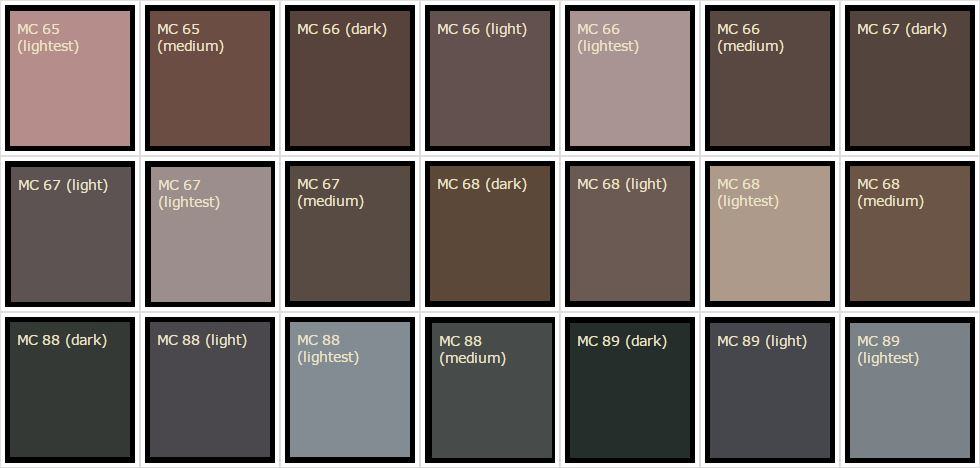Masonry, one of the oldest crafts in human civilization, is not just about the strength and durability of structures but also about the aesthetic appeal and storytelling through colors. The colorful world of masonry spans from the natural hues of raw stone to the sophisticated use of pigments and patinas that have adorned historical buildings for centuries. This article embarks on a vivid journey through time, exploring the role of color in masonry work and how modern restoration projects strive to preserve these chromatic narratives.
The Natural Palette: Stone Hues and Regional Colors
Earth’s Artistry: The Spectrum of Natural Stone
The story of color in masonry begins with the raw materials themselves. Natural stone, the earliest building material used by humans, offers a spectrum of colors that vary dramatically depending on its mineral composition and the environment in which it was formed. Limestone, for instance, ranges from pure white to deep blacks, while sandstone can display colors from soft beiges to vibrant reds and purples. This natural palette has allowed builders through the ages to create structures that are not only functional but also visually harmonious with their surroundings.
Regional Variations and Identity
The color of stone used in masonry often reflects the geological characteristics of its region, giving rise to distinct architectural identities across different cultures and eras. For example, the warm, golden tones of the limestone used in the buildings of Jerusalem have earned it the nickname “The Golden City.” Similarly, the use of red sandstone in the forts and palaces of India’s Mughal architecture not only showcases the material’s natural beauty but also symbolizes power and wealth. These regional variations in stone color have contributed to the diverse tapestry of global architecture, embedding a sense of place and identity within the masonry work.
The Alchemy of Pigments: Painting with Stone
Ancient Innovations: The Use of Pigments in Masonry
While the natural color of stone provides a rich medium for architectural expression, the innovation of pigments in masonry work has expanded the palette even further. Ancient civilizations were adept at enhancing or altering the color of their structures using pigments derived from natural sources. The Egyptians, for example, used azurite and malachite to achieve vivid blues and greens, while the Romans favored ochres and reds obtained from iron oxides. These early experiments in coloring masonry not only served aesthetic purposes but also conveyed social and political messages through the symbolism of colors.
The Renaissance of Color: Frescoes and Facades
The Renaissance period witnessed a revival and refinement in the use of pigments in masonry, most notably in the form of frescoes that adorned both the interiors and exteriors of buildings. This period saw the development of new pigments and painting techniques that allowed for more vibrant and durable colors. The use of frescoes to depict religious, mythological, and historical scenes added layers of meaning to the architecture, transforming buildings into canvases that narrated the cultural aspirations of the time.
Challenges and Triumphs in Restoration
Matching the Original Tones: A Restoration Challenge
One of the most significant challenges in the restoration of historic masonry buildings is accurately matching the original colors of pigments and stones. Over time, exposure to the elements, pollution, and previous restoration attempts can alter or obscure the original hues. Restorers rely on a combination of scientific analysis, historical research, and artisanal skill to recreate the colors as faithfully as possible. Techniques such as pigment analysis, ultraviolet light examination, and microscopic inspection of paint layers help in identifying the original materials and methods used.
Preservation and Progress: Balancing Act
The goal of restoration projects is not only to preserve the aesthetic and historical integrity of masonry work but also to ensure its durability for future generations. This often involves a delicate balancing act between employing traditional materials and techniques and integrating modern conservation technologies. For instance, while natural pigments may be used to replicate historical colors accurately, contemporary sealants and protective coatings are often applied to safeguard these colors against environmental damage.
The Role of Color in Architectural Symbolism
Communicating Through Colors
Beyond aesthetics, the colors used in masonry work have often carried deeper meanings, serving as a language in itself to convey social, political, and spiritual messages. In medieval Europe, for example, the use of white limestone was not just a matter of availability but also symbolized purity and divinity, making it a preferred material for churches and cathedrals. Similarly, the vibrant blues and greens in Islamic architecture represent the paradise described in the Quran, creating a spiritual atmosphere within mosques and palaces.
Colors as Cultural Signatures
Colors also serve as signatures of cultural identity, embedding the essence of a civilization’s artistic and architectural heritage within its structures. The terracotta reds of Italian Renaissance buildings, the stark white of Greek island homes, or the pastel hues of Caribbean architecture each tell a story of their people’s relationship with their environment, history, and traditions. This symbolic use of color enriches the narrative of masonry architecture, making it a study not just of construction but of human expression across ages.
Modern Restoration Techniques: A Spectrum of Solutions
Advanced Technologies in Color Matching
As the field of restoration evolves, so do the techniques for matching and reproducing the original colors of masonry work. Today, restorers have at their disposal an array of advanced technologies, from digital color-matching tools to 3D printing of replacement stones in precise hues. Spectrophotometers can measure the color of a surface accurately, aiding in the creation of custom pigments that match the original tones. Meanwhile, non-invasive laser cleaning techniques allow for the removal of centuries of grime without damaging the underlying colors, revealing the true beauty of the masonry beneath.
Sustainable and Durable Pigments
The quest for sustainability is driving innovation in the production of pigments and finishes for masonry restoration. Researchers are developing eco-friendly, durable pigments derived from natural sources that can withstand environmental elements without fading. These advancements not only ensure the longevity of restored masonry work but also minimize the ecological footprint of restoration projects, marrying the goals of preservation and environmental stewardship.
The Future of Color in Masonry: Blending Tradition and Innovation
Adaptive Reuse and Colorful Interventions
Looking forward, the role of color in masonry is set to expand through adaptive reuse projects and contemporary interventions in historic contexts. Architects are finding creative ways to integrate bold, modern color schemes with traditional masonry, breathing new life into old structures. These interventions, while respectful of the historical significance of buildings, offer a fresh perspective on how color can redefine spaces and engage communities.
Educating the Next Generation
The preservation of masonry’s colorful heritage also depends on education. By incorporating the study of historical pigments, materials, and techniques into architectural and conservation curricula, the next generation of restorers and builders can carry forward the legacy of vibrant masonry work. Workshops, apprenticeships, and collaborations between conservationists and artisans foster a hands-on understanding of the craft, ensuring that the knowledge and skills needed to maintain the world’s colorful masonry wonders are not lost.
The colorful world of masonry is a testament to humanity’s enduring desire to infuse the built environment with beauty, meaning, and identity. From the natural hues of ancient stones to the deliberate application of pigments and the modern challenges of restoration, color has always played a pivotal role in masonry work. As we move forward, the fusion of traditional techniques with innovative technologies promises not only to preserve the chromatic legacy of our architectural heritage but also to inspire new creations that celebrate the rich spectrum of masonry colors. In doing so, we honor the past while embracing a future where color continues to tell the stories of our shared human experience, one stone at a time.

